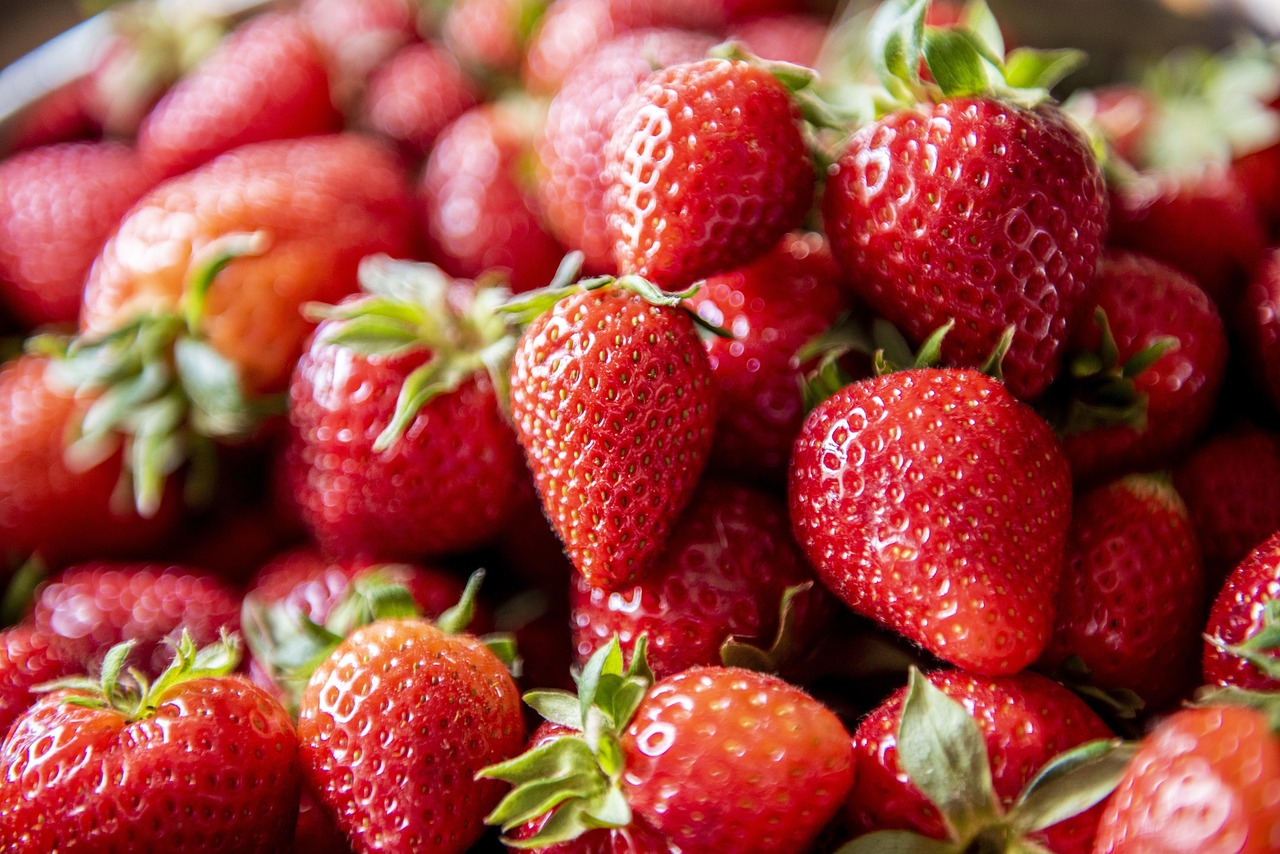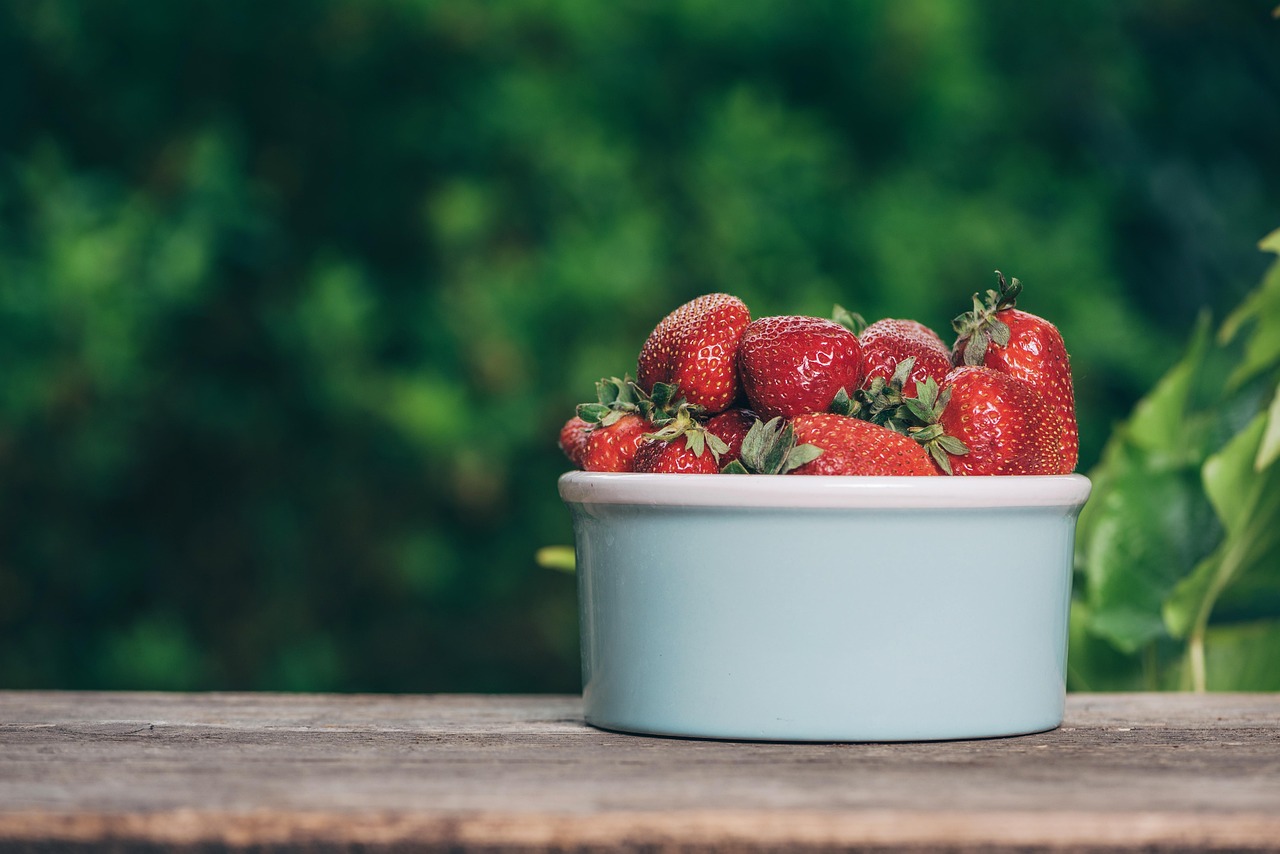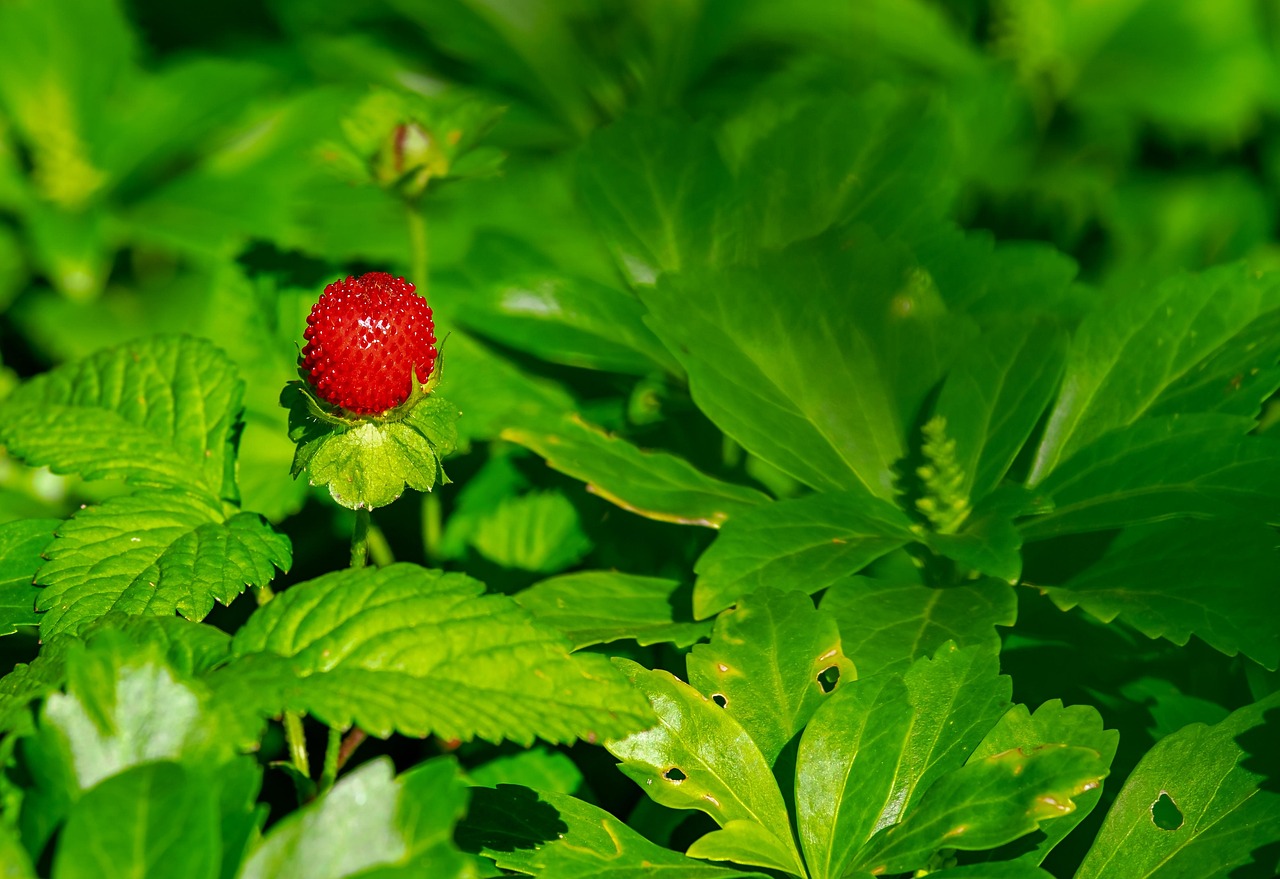The best strawberry varieties for the Dehradun climate, which is characterized by cold winters and moderate summers, include ‘Himalayan’, ‘Chandler’, and ‘Seascape’. These cold-hardy varieties thrive in lower temperatures and produce sweet, juicy fruits ideal for both home gardens and commercial cultivation.
Strawberries are a popular fruit around the world, celebrated for their vibrant color and sweet flavor. They are not only delicious but also packed with vitamins, minerals, and antioxidants. In regions like Dehradun, the climate poses unique challenges and opportunities for strawberry cultivation. Understanding which varieties can withstand colder temperatures is crucial for successful growth.
The Dehradun region experiences a temperate climate with distinct seasons. Winters can be quite chilly, which can affect the growth and yield of certain strawberry varieties. Cold-hardy strawberries are specifically bred to endure these lower temperatures while still producing high-quality fruit. Choosing the right variety can lead to a more fruitful harvest and healthier plants.
Understanding Cold-Hardy Strawberries

Cold-hardy strawberries are specially developed to thrive in cooler climates. These varieties can tolerate frost and lower temperatures without significant damage. This resilience allows them to grow in regions where traditional strawberries may struggle. Cold-hardy varieties often produce fruit earlier in the growing season, taking advantage of the spring warmth.
When selecting strawberries for colder climates, it is essential to consider several factors, including the variety’s hardiness, fruiting habits, and disease resistance. Below are some key features to look for in cold-hardy strawberry varieties:
- Frost Resistance: Varieties that can withstand frost increase your chances of a successful harvest.
- Early Fruiting: Choosing varieties that fruit early can maximize the growing season.
- Flavor Profile: Selecting varieties known for their sweetness will enhance your culinary uses.
- Disease Resistance: Some varieties are more resilient to common strawberry diseases.
Top Cold-Hardy Strawberry Varieties for Dehradun
Here are some of the best cold-hardy strawberry varieties suitable for the Dehradun climate:
| Variety | Description | Best Planting Time |
|---|---|---|
| Himalayan | A native variety that excels in high altitudes. Produces sweet berries with excellent flavor. | March to April |
| Chandler | Known for large, flavorful fruits. Adaptable to various climates, including cold winters. | Early spring |
| Seascape | Offers continuous fruiting throughout the season. Ideal for home gardens. | April to May |
Each of these varieties has its unique characteristics that cater well to the Dehradun climate. By choosing the right variety, gardeners can enjoy a bountiful harvest even in colder months.
Growing Conditions for Cold-Hardy Strawberries
To cultivate cold-hardy strawberries successfully in Dehradun, understanding the growing conditions is vital. These conditions include soil type, sunlight, temperature, and water requirements. Each factor plays a significant role in ensuring healthy plants and fruitful yields.
Soil Requirements
Strawberries thrive best in well-drained, sandy loam soil that is rich in organic matter. Here are some essential soil characteristics:
- pH Level: The ideal pH for strawberries is between 5.5 and 6.5. Testing the soil before planting can help determine if amendments are necessary.
- Drainage: Good drainage is crucial to prevent root rot. Raised beds or mounded rows can enhance drainage.
- Organic Matter: Incorporating compost or well-rotted manure improves soil fertility and structure.
Sunlight Requirements
Strawberries require full sunlight for optimal growth. They should receive at least 6 to 8 hours of direct sunlight each day. Adequate sunlight encourages flowering and fruiting, leading to higher yields.
Temperature and Climate
Cold-hardy varieties can withstand temperatures as low as -20°F (-29°C) once established. However, they thrive best in moderate temperatures ranging from 65°F to 75°F (18°C to 24°C). Here are some climate considerations:
- Frost Protection: Early spring frosts can damage blossoms. Using row covers or mulch can help protect plants during unexpected cold snaps.
- Heat Tolerance: While these varieties handle cold well, extreme heat can stress the plants. Providing shade during the hottest part of the day can help mitigate this issue.
Planting Techniques for Cold-Hardy Strawberries
Proper planting techniques are essential for establishing healthy strawberry plants. Following these guidelines can enhance growth and fruit production.
When to Plant
The best time to plant strawberries in Dehradun is either in early spring or late summer. Early spring planting allows the plants to establish before the heat of summer. Late summer planting offers another chance for gardeners who miss the spring window.
Spacing and Arrangement
When planting strawberries, spacing is critical to ensure adequate airflow and sunlight exposure. Here are some spacing guidelines:
- Row Spacing: Rows should be spaced about 3 to 4 feet apart.
- Plant Spacing: Within the row, space plants about 12 to 18 inches apart.
Planting Method
The planting method can significantly impact plant growth. Follow these steps for effective planting:
- Prepare the soil by tilling it and mixing in organic matter.
- Create holes that are deep enough to accommodate the root system without bending the roots.
- Place the plants in the holes, ensuring that the crown (the point where roots meet stems) is at soil level.
- Fill in with soil and water thoroughly to eliminate air pockets.
Caring for Cold-Hardy Strawberries
Once planted, ongoing care is necessary to ensure healthy growth and productive plants. Addressing water, fertilization, and pest management will enhance your strawberry yield.
Watering Needs
Strawberries require consistent moisture, especially during flowering and fruit development. Here are some watering tips:
- Irrigation: Drip irrigation systems are ideal as they minimize water on foliage, reducing disease risk.
- Frequency: Water deeply once a week, increasing frequency during dry spells or hot weather.
Fertilization
Applying fertilizer correctly helps provide essential nutrients for strawberry plants. Consider these fertilization tips:
- Type of Fertilizer: Use a balanced fertilizer (like 10-10-10) or one specifically formulated for strawberries.
- Timing: Fertilize at planting time and then again after harvest to promote new growth for the next season.
Pest and Disease Management
Healthy plants are less susceptible to pests and diseases. Regular monitoring is essential to catch problems early. Some common issues include:

- Pests: Aphids and spider mites can be problematic; consider introducing beneficial insects or using insecticidal soap as needed.
- Diseases: Fungal diseases like powdery mildew may occur; practice crop rotation and ensure good air circulation.
By understanding the growing conditions, planting techniques, and care required for cold-hardy strawberries, gardeners in Dehradun can foster thriving plants that yield delicious fruits throughout the season.
Harvesting Cold-Hardy Strawberries

Harvesting strawberries at the right time is crucial for ensuring the best flavor and quality of the fruit. Knowing when and how to harvest cold-hardy strawberries can make a significant difference in your yield.
When to Harvest
Cold-hardy strawberries typically bear fruit in late spring to early summer. The best time to harvest is when the strawberries are fully ripe, which is indicated by their vibrant color and slight softness. Here are some signs that your strawberries are ready to be picked:
- Color: Strawberries should be a deep red color. Avoid picking those that are still white or green.
- Texture: Ripe strawberries will feel slightly soft to the touch. If they are too firm, they may not be fully ripe.
- Size: While size can vary between varieties, larger berries are generally more mature and flavorful.
Harvesting Techniques
To ensure that the strawberries remain intact during harvesting, follow these techniques:
- Use scissors or garden shears to cut the stem of the strawberry about an inch above the fruit. This helps avoid damaging the plant.
- Gently twist the berry while pulling it slightly to detach it from the plant.
- Avoid pulling or yanking on the fruit, as this can damage both the fruit and the plant.
Post-Harvest Handling
Once harvested, proper handling of strawberries is essential to maintain their quality and freshness. Here are some important steps to follow:
Cleaning
Before storing your strawberries, it’s important to clean them properly:
- Rinse: Gently rinse the strawberries under cool running water to remove dirt and debris.
- Dry: Pat them dry with a clean cloth or paper towel to prevent excess moisture, which can lead to mold.
Storage Methods
The way you store your strawberries can greatly affect their shelf life. Here are some effective storage methods:
- Refrigeration: Store strawberries in the refrigerator in a breathable container. Avoid washing them until just before use to prolong freshness.
- Freezing: For long-term storage, freeze strawberries. Clean and slice them, then spread them on a baking sheet to freeze individually before transferring them to a freezer-safe bag.
Using Strawberries in the Kitchen
Strawberries are incredibly versatile in the kitchen. Their sweet flavor and vibrant color make them a popular ingredient in many dishes. Here are some delicious ways to use fresh strawberries:
Desserts
Fresh strawberries can enhance a variety of desserts, such as:
- Cakes: Use them as a topping for cakes or incorporate them into batter for added flavor.
- Pies: Strawberry pies are a classic dessert that highlights the fruit’s sweetness.
- Ices and Sorbets: Blend fresh strawberries with sugar and a splash of lemon juice for refreshing sorbet.
Salads
Add strawberries to salads for a burst of flavor. Here are some ideas:
- Mixed Green Salad: Combine strawberries with mixed greens, nuts, and feta cheese for a delightful salad.
- Fruit Salad: Create a refreshing fruit salad by mixing strawberries with other seasonal fruits.
Sauces and Jams
Strawberries can also be transformed into delicious sauces or preserves. Consider these options:
- Sauces: Cook down strawberries with sugar and lemon juice to create a flavorful sauce for pancakes or waffles.
- Jams: Homemade strawberry jam is a great way to preserve their flavor for months.
Utilizing cold-hardy strawberries in various culinary applications not only enhances meals but also provides a way to enjoy your harvest beyond the growing season.
Maximizing Your Strawberry Harvest

To fully enjoy the benefits of growing cold-hardy strawberries in Dehradun, it’s essential to maximize your harvest. This involves not only proper planting and care but also understanding the optimal conditions for fruiting and how to encourage continuous production.
Encouraging Continuous Fruiting
Many cold-hardy strawberry varieties can produce fruit multiple times in a season, especially if properly cared for. To encourage continuous fruiting, consider the following:
- Regular Harvesting: Picking strawberries regularly encourages the plants to produce more fruit. Aim to harvest every few days during peak season.
- Deadheading: Remove spent blooms after harvesting. This allows the plant to redirect energy towards new growth and fruit production.
- Proper Watering: Consistent moisture levels are vital during fruit development. Ensure your plants receive adequate water, especially during dry spells.
Companion Planting
Companion planting can enhance the growth of strawberries while also providing benefits to neighboring plants. Some effective companion plants include:
- Basil: Known to repel pests, basil can help protect strawberries from aphids and other harmful insects.
- Spinach: This leafy green can provide shade for young strawberry plants and retain moisture in the soil.
- Marigolds: These flowers can deter nematodes and other pests that may harm strawberries.
Storing and Preserving Strawberries
Beyond fresh consumption, knowing how to store and preserve your strawberry harvest is beneficial, especially when you have an abundance. Here are additional methods for preserving strawberries:
Canning
Canning is a great way to store strawberries for long-term use. Follow these steps for safe canning:
- Prepare jars and lids by sterilizing them in boiling water.
- Prepare strawberries by washing, hulling, and slicing as desired.
- Fill jars with strawberries and syrup or juice, leaving appropriate headspace.
- Process jars in a hot water bath according to recommended times for your altitude.
Making Strawberry Powder
An innovative way to preserve strawberries is by making strawberry powder. This can be used as a flavoring in smoothies, baking, or even as a natural coloring agent. To make strawberry powder:
- Dehydrate fresh strawberries using a dehydrator or an oven at a low temperature.
- Once dry and brittle, grind the strawberries into a fine powder using a blender or spice grinder.
- Store the powder in an airtight container in a cool, dark place.
Final Thoughts
Growing cold-hardy strawberries in Dehradun offers a rewarding experience for gardeners. With the right varieties, proper care, and effective harvesting techniques, you can enjoy an abundant supply of delicious strawberries throughout the growing season. The key is to understand your growing conditions, select suitable varieties, and implement effective cultivation practices.
Incorporating strawberries into your meals can enhance your culinary repertoire, allowing you to enjoy their sweet flavor in various dishes. From fresh salads to homemade jams, the versatility of strawberries is unmatched. By maximizing your harvest and utilizing preservation techniques, you ensure that you can savor the taste of summer long after the growing season ends.
As you embark on your strawberry-growing journey, remember that patience and care will yield delicious results. With dedication and knowledge, you can cultivate a thriving strawberry garden that brings joy to your home and table.
